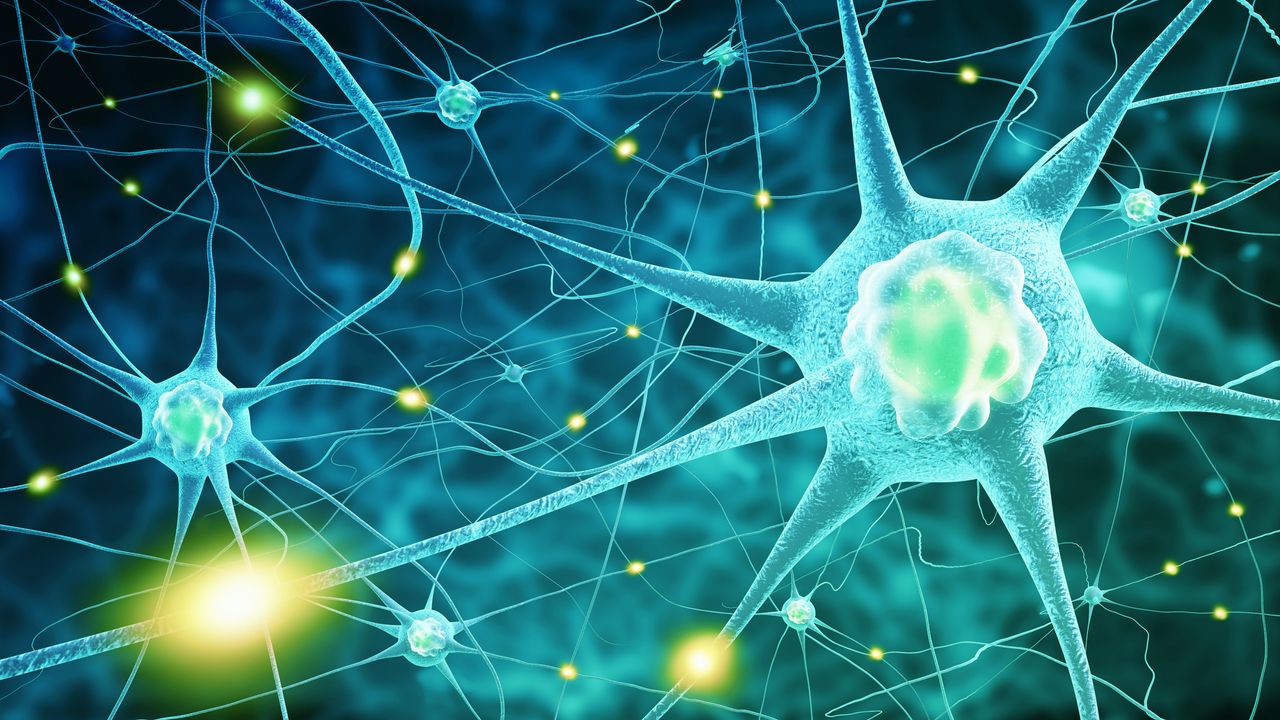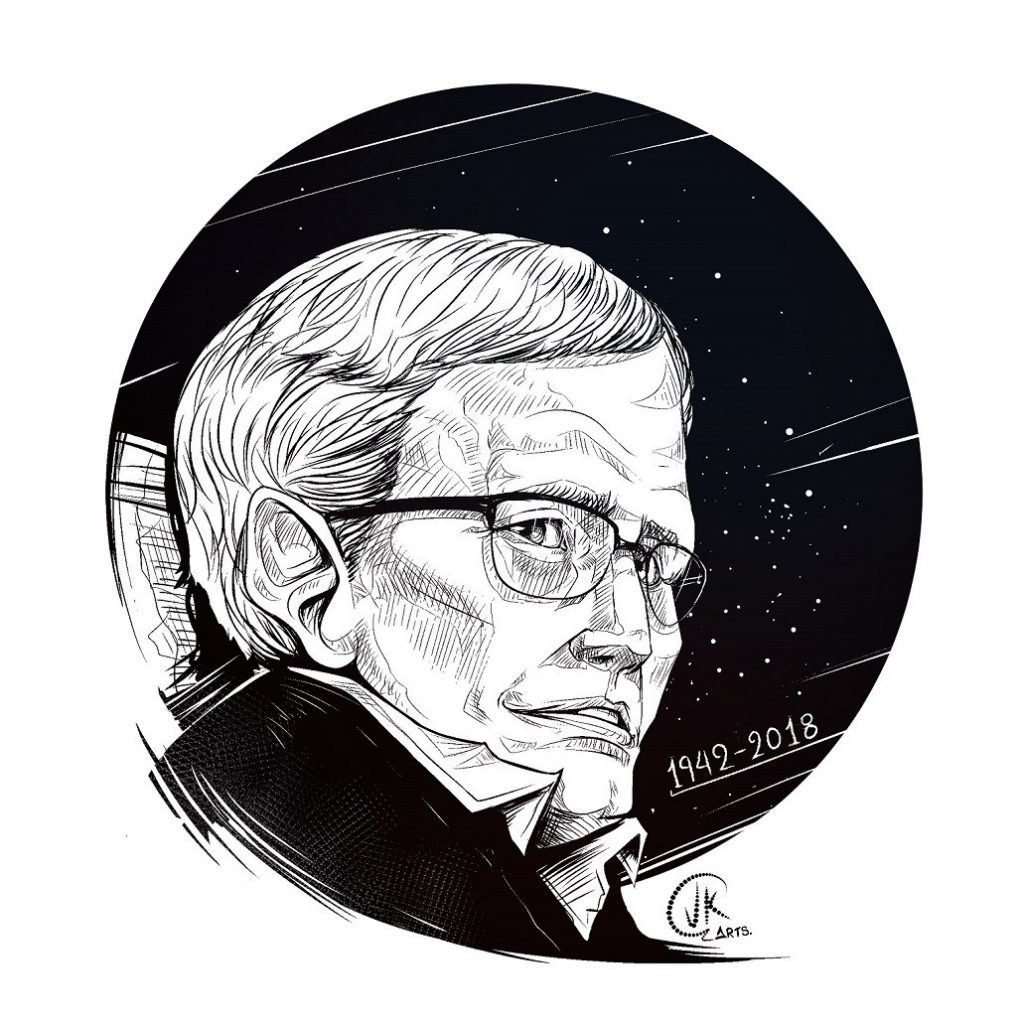In addition to his theories about the universe, black holes, and time, Stephen Hawking was recognized for his amazing survival of Amyotrophic Lateral Sclerosis. ALS gives those who suffer from it a few years of life expectancy. The theoretical physicist defied those predictions from his diagnosis at age 21 to his death at 76. How did he do it? Some things we know, but many others we do not. Patient associations call for more research. Today, June 21, Global ALS Awareness Day is celebrated. For this reason, we want to take the opportunity to tell you a little about this disease; and pay tribute to one of the most brilliant minds of our times.
Stephen Hawking And Amyotrophic Lateral Sclerosis
Stephen Hawking told that when he was in his third year of university, at Oxford, he realized that he was becoming more clumsy. “I tripped and fell two or three times for no reason.” Would you give importance to something like that? Surely not much. He didn’t give it to her either, but his father did and took him to a specialist. He was hospitalized for two weeks and subjected to various tests. Finally, the diagnosis was confirmed.
Hawking was diagnosed at age 21 and advised that the average life expectancy of people with ALS is between four and five years. He would hardly exceed 25 years and there was little chance that he would reach 27.
But he did. Hawking reached 27 and surpassed them. He passed away on March 14 of 2018; after turning 76 in January and having left behind not only all forecasts but also several health crises that were about to cost him his life on different occasions. How did he do it? How was Hawking able to surpass by almost 50 years the most optimistic predictions about his life expectancy?
The Theory of Everything, a look at the effects of Amyotrophic Lateral Sclerosis in the life of Stephen Hawking
ALS Begins In Different Ways
To answer that question, you need to understand a little more about the motor system and ALS. In the human body, each muscle is controlled by motor neurons that are located in the frontal lobe of the brain (upper motor neurons) and that are connected to others located in various areas of the brain and to lower motor neurons that reside in the spinal cord. Although we talk about ALS in the singular, there are actually different types of ALS.
Two types
There is what we call spinal, which mainly affects the upper motor neurons and begins by affecting the extremities. People who suffer from it realize it because they stumble; or because one day they can’t put the house key in the lock. And there is another one that we call bulbar; first affects the lower motor neurons and manifests itself mainly in the respiratory system or due to problems swallowing or speaking.
In both cases, the disease progresses so that eventually all the muscles in the body are affected. In fact, ALS does not directly damage any vital organs, but it does damage the diaphragm, which helps us breathe; also, the muscles of the throat, without which we cannot swallow or breathe. According to one study, the usual causes of death for ALS patients are either suffocation or debilitation related to malnutrition and dehydration that prevents them from coping with infections such as pneumonia.
That is why in some cases when ALS begins with the neurons of the spinal cord and progresses slowly, taking a long time to affect the muscles necessary for survival, the patient may live longer, which is one of the reasons for the admired longevity of Hawking.
There are many other things that are unknown about ALS, including what causes it, how it progresses, and what influences how fast it progresses. We know that the average age of patient survival from diagnosis is between four and five years and that the most common age of development and diagnosis of the disease is in the 60s. But there are patients who live longer and others who live less, and we don’t know why.
Care And Research
As part of his daily treatment, Hawking supplemented his diet with vitamins and minerals: zinc, folic acid, liver oil, vitamin B, vitamin C, and vitamin E. In addition, he followed a gluten-free diet, without vegetable oils and without precooked food. He received passive physical therapy for the chest and passive and active physical therapy for the limbs and muscle groups.
Care and therapy will not stop the disease, but they are essential for patients to have a better quality of life: they maintain and improve their physical condition for longer, and it helps to raise their self-esteem and spirits. ALS is a particularly cruel disease because mental capacities are never lost: the patient is aware of everything that happens to him while he becomes trapped in his own body.
Neurologists, nurses, physiotherapists, psychologists, social workers, palliative care, technical assistance, and economic resources are necessary; this is a very expensive disease.
ALS sufferers need specialist care, but also basic research to unravel what triggers this disease, why it is sometimes a quick killer and sometimes takes its time, and what we can do to stop it.
For now, one of the main lines of research in genetics: the aim is to find out which mutations are related to ALS in order to advance in early diagnosis and even in methods that allow carriers of these mutations to prevent their descendants from inheriting them.
The MINE project, which is working on this issue, intends to analyze at least 15,000 profiles of ALS patients and another 7,500 healthy people who serve as controls so that by comparing them, the genetic alterations shared by patients and who do not have the others, marking the first step on the road to solving the enigma that ALS is still today.
Text-To-Speech: A Tool For Amyotrophic Lateral Sclerosis Patients
Speech synthesis is the artificial production of speech. The computerized system that is used for this purpose is called a speech computer or speech synthesizer; it can be implemented in software or hardware products. A text-to-speech (TTS) system converts normal text language into speech; other systems recreate linguistic symbolic representation as phonetic transcriptions in speech.
There is a wide variety of TTS applications (apps) for mobile phones and tablets that convert text into speech. These are useful for people with oral language difficulties such as dysarthria or difficulty in the pronunciation of some phonemes or complete loss of voice.
Text-To-Speech By Woord
Woord is our number one choice for its intuitive design when talking about accessibility and inclusion. This Saas is an excellent tool for those who do not have much experience with this type of software; if what you need is a simple and good-quality job, Woord will fulfill the task. Also, allows you to select the type of device on which you will play the audio; doing so will apply effects that will improve the quality of the MP3 file.

Since we are talking about inclusion, we must mention that this free ai voice generator has female, male, and gender-neutral voice styles. Also, Woord has an SSML editor, allowing you to adjust the speed of the audio without affecting the quality. Many blind people have the ability to interpret sounds faster than average; adjusting the pace of the audio can make the process much faster for them.
Finally, we must say that in addition to the fact that the free option is excellent, buying a pro version can be a good investment for teaching work. In this sense, Woord is also a great option for its affordable prices.


